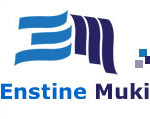In today’s digital-driven market, capturing and retaining your audience’s attention is more difficult than ever. People are constantly bombarded with information, making it increasingly essential for brands to develop content that not only informs but also engages. Content marketing goes beyond simply publishing blog posts or social media updates—it’s about creating meaningful interactions that build trust and encourage loyalty.
Understand Your Audience
The first step to boosting audience engagement is developing a deep understanding of your target audience. What are their needs, concerns, interests, and preferences? Creating detailed audience personas can help you segment your audience effectively and tailor content that resonates with them.
Make use of analytics tools, customer surveys, and social media listening to uncover insights about your audience’s behavior. Knowing which platforms they frequent, their browsing habits, and their content consumption patterns gives you a framework for content that feels personal and valuable.
Prioritize Quality Over Quantity
While it’s important to remain consistent in content production, volume should never come at the cost of quality. Informed, well-crafted content delivers more long-term value than frequent but shallow posts. Aim to produce content that:
- Answers your audience’s questions
- Provides actionable insights or solutions
- Reflects your brand’s expertise and authenticity
High-quality content boosts your credibility and encourages users to spend more time on your site, increasing the possibility of return visits and shares.
Use Visuals Strategically
Visual content not only aids comprehension but also makes your content more appealing and shareable. Integrating images, infographics, and videos can significantly increase engagement, especially on platforms like Instagram and Twitter.
Use tools to create professional, brand-consistent visuals and ensure that every image or video adds value rather than serving as filler.
Encourage Interaction
Interactive content is a powerful tool to engage users more deeply. By inviting the user to participate in the experience, you create a two-way relationship that enhances connection and trust.
Consider incorporating these interactive elements:
- Polls and quizzes
- Live Q&A sessions
- Comment sections with guided prompts
- Interactive infographics or animations
The more interactive your content, the more likely your audience is to engage with it meaningfully and frequently.
Optimize for SEO and Readability
If your audience can’t find your content, they can’t engage with it. Ensure all your content is optimized for search engines by using relevant keywords, clear headlines, and meta descriptions. Beyond SEO, consider how the content looks on the page—break text into manageable sections, use bullet points, and highlight key information.
Make sure the language is accessible without being overly simplistic. Use active voice, concise sentences, and transitional phrases to maintain flow and reader interest.
Repurpose and Reshare Smartly
Maximizing the life of your content through repurposing can extend its reach and impact. Turn a blog post into a video summary, slice a long-form whitepaper into a series of social media posts, or compile popular posts into a downloadable ebook.
This strategy allows you to reach different segments of your audience with the same core message but through diverse channels and formats that suit different consumption preferences.
Measure, Analyze, Adjust
To continuously improve your engagement strategies, measuring performance is crucial. Use tools such as Google Analytics, social platform insights, and email analytics to understand how your content performs. Monitor key engagement metrics like:
- Click-through rates
- Average time spent on page
- Social shares and comments
- Bounce rates
Apply these insights to refine your approach. Identify content types and topics that perform well and double down on them, while rethinking or improving underperforming pieces.
Conclusion
Audience engagement is not built overnight—it requires time, testing, and a commitment to delivering consistently valuable content. By understanding your audience, emphasizing quality, making smart use of visuals, and continually optimizing your strategy, you can establish lasting connections that drive both trust and measurable results for your brand. Remember, content marketing is as much about communication as it is about conversion. Prioritize the audience’s experience, and the outcomes will follow.

